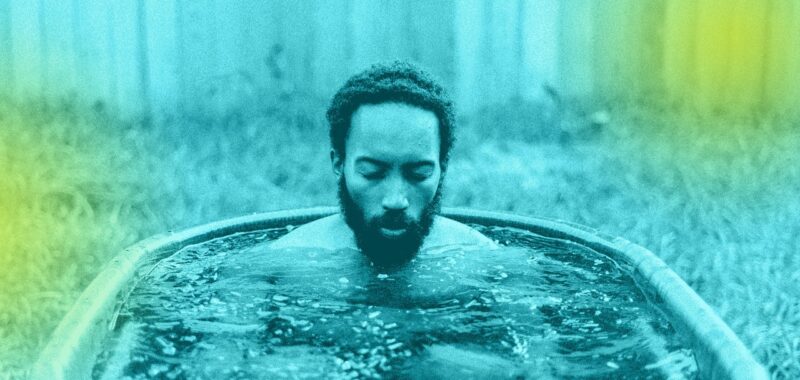From Yankees outfielders to internationally recognized DJs to your average Joe on TikTok, millions of people have jumped on the cold plunge trend. Nothing, it seems, is more bingeable than videos of bathing-suit-clad people shivering, chattering, and dumping literal blocks of ice into an already frigid tub—especially if you’re scrolling from the comfort of your warm, cozy couch under a layer of blankets.
Turns out, submerging yourself in frigid temps isn’t just highly memeable: While the definitive benefits of a cold plunge before or after a workout are still being studied, there’s enough research and anecdotal evidence out there to suggest that a daily dip may help you hit your gym routine harder and more often. But there’s one crucial detail that could impact the effects you get from soaking in a freezing tub: the timing. Should you cold plunge before or after a workout? Well, here’s what you’re gonna want to know before embracing your inner Wim Hof.
What Is Cold Plunging?
There’s no strict definition for what counts as “cold” water. But research on cold plunges—also called cold water immersion—has experimented with temperatures ranging from roughly 40 to 60 degrees Fahrenheit. In most studies, people stay submerged anywhere from 5 to 20 minutes.
Karena Wu, DPT, owner and clinical director of ActiveCare Physical Therapy in New York City and Mumbai, says cold plungers typically build up to extreme temps and times just like you’d build up mileage during marathon training. “You start at the warmer temperatures, like 59 degrees [Fahrenheit], and stay in for 30 seconds to a minute, and then gradually increase your time and decrease the temperatures,” she says, adding that if you regularly practice three or four times a week, your body will start to acclimatize to the shock of the icy water.
The Benefits of Cold Plunging
Despite the fact that cold water therapy dates back to Hippocrates, cold plunging doesn’t have a ton of research backing up its numerous health claims. Unhelpfully, many of the studies that are out there contradict each other. For instance, many people claim cold plunging can boost immunity, but the research shows mixed results. Others use it to manage chronic inflammation, though Grace Horan, an exercise physiologist at the Hospital for Special Surgery in New York, says the data isn’t definitive. There is decent evidence to suggest that hopping in a tub of cold water could improve insulin sensitivity, which helps manage your blood sugar, if it gets you shivering.
You also clearly get a rush of endorphins and adrenaline—nothing will wake you up faster than a dunk in frigid temps. “It’s stimulating your system,” Wu says. One 2023 study found a five-minute dip made participants feel more alert while also less stressed or nervous. Another 2021 study concluded cold to be a major mood booster. After all, it’s pretty hard to feel bored or tired when you’re soaking in water so cold it stings.
Cold Plunge Before a Workout
“Pre-workout” doesn’t just refer to overly caffeinating via supplements; cold plunging is also a way some gym bros prep to hit the weight room.
Pros
There’s something to be said for the thrilling shock of a cold plunge. That extra dose of alertness you get from plunging before a workout just might keep your mind from wandering when you should be focused on your reps.
Cooling off before getting your sweat on can also come in handy when you’re facing super hot conditions: One 2017 meta-analysis found cold water immersion could improve endurance performance in elevated temps, potentially by bringing down your core temperature.
Cons
There’s a reason why every workout starts (or should start) with a warm-up. Optimal performance requires increased blood flow to bring extra oxygen and nutrients to your working muscles, according to Horan. Restricting that blood flow with a cold plunge counteracts what you’d do during a warm-up.

